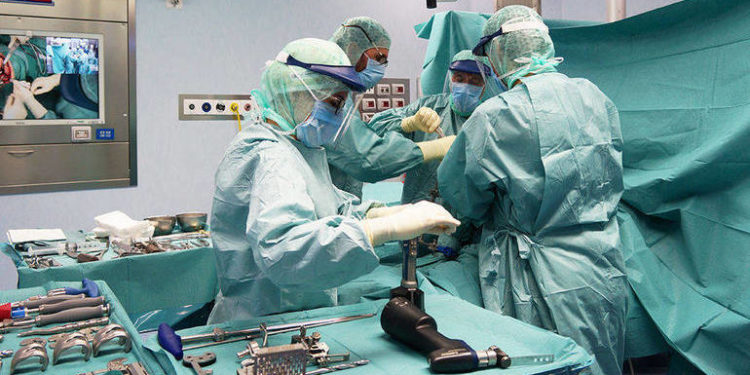A team of the Rizzoli Hospital in Bologna managed for the first time to implant a 3D “printed” ankle prosthesis.
An important step towards the medicine of the future. A team of surgeons from the Rizzoli Orthopaedic Institute in Bologna has successfully implanted a 3D “printed” ankle prosthesis. This is the first time that a prosthesis made entirely using this technology has been successfully implanted in a patient with ankle trauma. The operation was performed on October 9 on a 57-year-old man who had lost the use of his foot due to trauma reported in a motorcycle accident in 2007. Thanks to the ankle implanted by Rizzoli’s surgeons, the man will be able to undergo rehabilitative therapy and, within a year, return to normal walking. This is not the first time that the 3D print “enters” the operating room. Also in October, surgeons at Meyer Hospital in Florence used a 3D printer to make an ear prosthesis that was then successfully implanted on a patient who was just 13 years old. The advantage of this technology is the possibility of obtaining “tailor-made” prostheses, calibrated to the anatomy and specific clinical needs of individual patients.
3D printed ankle: “historic” surgery in Bologna
The team that performed the pioneering operation was led by Professor Cesare Faldini, director of the Orthopaedic Clinic 1 in Bologna. At the end of the operation, the professor explained that the procedure adopted “was created for patients who cannot receive traditional prostheses and who therefore risk not walking again”. Beyond the benefits for the patient in Bologna, the intervention in Bologna represents an important step towards the future of surgical medicine. The applications of 3D printing in the medical field are in fact potentially endless. Using this technology it is possible to correct malformations, remove congenital alterations and produce customized prostheses, all while minimizing the risk of errors or unwanted outcomes. “The technique and technology we have applied – concluded Professor Faldini – represent the future of surgery: 3D models make it possible to plan the surgery and to adapt the reconstructive model to the individual patient with a precision that was unthinkable with 2D techniques”.

































